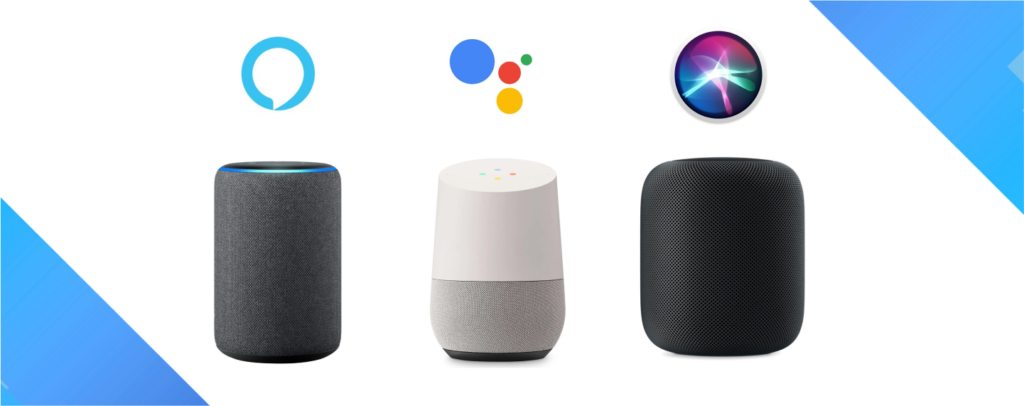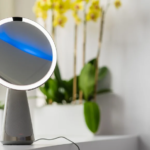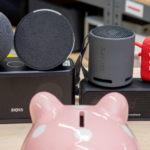

Learn all there is to know about voice-activated smart assistants! The best gadgets, key features, how they operate, and how to get the most out of your smart assistant are all covered in this easy-to-follow guide.
Table of Contents
Introduction
Have you ever considered how voice-controlled smart helpers can make your life easier? I still recall the first time I asked my helper to play music. It felt magical! Fast forward to today, these devices can handle reminders, run smart home gadgets, and even answer random trivia questions. But here’s the point: newbies might find it a bit overwhelming. Don’t worry, I’m here to help you! This guide will help you learn all about smart helpers, including how to set them up and use them daily so you can get the most out of them.
Whether you’re new to smart assistants or curious about their potential, this guide will break it down in simple terms. We will examine how they work, which ones are good for newbies, and how you can make the most of them. By the end, you’ll feel like a technology expert—no prior experience needed!
Fun Fact: Did you know that 71% of homes in the U.S. have at least one voice-activated device? It’s time to get on board with the trend!
What Are Smart Assistants?
Voice-controlled virtual assistants, or smart assistants, are AI-powered devices that can help you with various activities when activated by simple voice commands. Instead of working at a desk, they are integrated into devices such as smart speakers, cell phones, and even household appliances.
Think of them as personal assistants. Once activated, these assistants may do various functions, including playing music, setting timers, answering questions, controlling smart home devices, and much more. They react to certain “wake words” such as “Alexa,” “Hey Google,” and “Hey Siri.”
Basic Functionality of Smart Assistants
Smart assistants use natural language processing (NLP) to understand your voice requests and translate them into actions or responses. For example, when you ask, “What’s the weather today?” the assistant translates your inquiry, retrieves data from a connected weather service, and returns the current prediction. These devices can do more than just answer questions; they can add items to your shopping list, call a friend, and even manage your thermostat with your voice.
These assistants are “smart” because of their ability to learn and adapt. They gradually analyze your preferences and habits and frequently ask commands to give a more personalized experience. For example, if you consistently ask Alexa to play jazz in the evenings, it may recommend jazz playlists or performers you’ve never heard of. This combination of ease and adaptability makes them an important contribution to modern living.
The Evolution of Smart Assistants
Smart helpers have improved a lot since they first started. Voice-controlled technology began in the 1960s with IBM’s “Shoebox,” a device that could understand a limited number of spoken words. In the 2000s, virtual helpers like Apple’s Siri started coming out, with Siri launching in 2011. This was the start of using AI for voice control in popular technology.
In the years after, companies like Amazon and Google advanced the idea significantly. Amazon’s Echo products, which use Alexa, were launched in 2014. They brought the concept of a smart speaker that can control home devices. Google introduced Google Assistant, which works well with its products, and Microsoft started using Cortana. Today, these helpers don’t just respond to requests; they also take initiative. They can help you remember your appointments, suggest recipes using what you have at home, or lead you to meditation sessions.
Also, adding them to the Internet of Things (IoT) has made them even more useful. Smart assistants can now work with many products, including light bulbs, doorbells, smart TVs, and refrigerators. This change has turned them from basic voice command tools into complete AI assistants that connect our homes and lives better.
Popular Examples of Smart Assistants
When we talk about smart assistants, three names dominate the market: Alexa, Google Assistant, and Siri.
- Alexa (Amazon): Known for its wide compatibility with smart home devices, Alexa is a favourite for those diving into home automation. From controlling lights and locks to playing audiobooks, Alexa is incredibly versatile and integrates seamlessly with Amazon’s ecosystem.
- Google Assistant: If you’re looking for an assistant with powerful search capabilities, Google Assistant is your go-to. It excels at answering complex questions thanks to Google’s vast database and is perfect for Android users or those with Google’s smart home devices.
- Siri (Apple): Siri might not be the newest player, but it’s deeply embedded into the Apple ecosystem, making it the best choice for iPhone, iPad, and Mac users. From sending messages to managing Apple HomeKit devices, Siri is designed for Apple enthusiasts.
Other important options include Microsoft Cortana, which helps with productivity, and Samsung’s Bixby, which is made to work well with Samsung devices. Users can pick the helper that works best for them and their systems.
Benefits of Smart Assistants


Smart assistants literally make life easier. One of the best benefits is that they make everyday chores easier. For example, I can’t remember how often I’ve used it to set reminders for things like taking my medicine or meeting work goals. It’s like having a personal helper who always remembers things and doesn’t cost you anything.
These devices are more than just warnings. They greatly improve efficiency. Imagine you’re making dinner and suddenly remember you must set up a meeting for tomorrow. Instead of struggling with your phone, you can say, “Hey, Google, schedule a meeting at 10 a.m.,” and it’s done.
If you love smart houses, assistants are very important. Think about being able to turn off lights, lock doors, or change the temperature without doing anything. This ease is useful for seniors or people with trouble moving around.
Don’t forget about fun. Smart assistants can make your day more enjoyable by playing your favorite music, making jokes, or providing games for kids. It even tells bedtime stories to my kids, which is really sweet.
Looking for a workout partner? Smart helpers can help you with exercise routines or meditation. I started using mine to count my steps and tell me to drink water. It’s like having a friend who always encourages you.
Given their advantages, it’s easy to see why smart helpers are common in many homes. Once you start using it, you’ll discover new ways it can simplify your life every day!
- Simplifying daily tasks like reminders, timers, and scheduling.
- Enhancing productivity through voice-controlled apps and automation.
- Accessibility benefits for seniors and individuals with disabilities.
- Entertainment: streaming music, games, and more.
How to Set Up a Smart Assistant
Setting up a smart helper for the first time can seem scary, but it’s easier than expected. When I got my first Amazon Echo, I thought I would make a mistake, but in just 10 minutes, it was working perfectly! If you’re feeling worried, take things one step at a time, and you’ll be fine.
- Step-by-step guide to unboxing and setup.
- Connecting to Wi-Fi and linking apps.
- Customizing wake words and default preferences.
- Troubleshooting common setup issues.
Step 1: Unboxing and Plugging In
Take your new helper out of the box and plug it into an outlet. Most devices, like Alexa or Google Nest Mini, have LED lights that help you follow the setup steps. Tip: Put it in a central spot, like your kitchen or living room, so the microphone can hear your orders from any direction.
Step 2: Download the Companion App
You must download an app for any smart helper, like Amazon Alexa or Google Home. Open the app and follow the steps on the screen to connect your assistant to your Wi-Fi. This will take a few minutes, so please be patient! And double-check your Wi-Fi password—been there, done that with the wrong one.
Step 3: Customize Your Settings
Once you’re linked, go to the app’s settings. Here, you can choose a wake word (like “Alexa” or “Hey Google”) and set your usual choices for music, news, and your daily commute. Don’t skip this step; it really helps make the experience more personalized.
Step 4: Link Other Devices
Now comes the exciting part: linking your other smart gadgets. If you have smart lights, thermostats, or security cameras, you can connect them to your assistant using the app. For example, I connected my helper to my smart plugs so I could turn on my coffee maker just by speaking.
Step 5: Test and Troubleshoot
Finally, give your helper a few test commands: “What’s the weather today?” or “Play my favorite playlist.” If something isn’t working, look for fixing tips in the app. Most problems can be fixed by reconnecting to Wi-Fi or updating the firmware.
Setting up smart assistance is the first step to making life easier. Believe me, once you start using voice controls, you’ll be surprised how you lived without them!
Advanced Features You Should Know About


Smart assistants do more than just set timers or play music; they have some great features that can enhance your experience. When I first learned about routines, it felt like I had found a special skill. These advanced features make smart assistants more than just toys; they are personal helpers with real possibilities.
- Setting up routines for home automation.
- Voice shopping tips and safety features.
- Fitness and wellness integrations (guided workouts, meditation apps).
- Multilingual and multi-user support.
Routines for Home Automation
What’s one of the best features? Regular activities or habits. These let you automate multiple jobs with a single command. I made a “Good Morning” program that turns on the lights, tells me the weather, and starts my coffee maker with one command: “Good morning.” You can set up routines so your assistant will instantly lock the doors and dim the lights at 10 p.m. every night. It’s simply amazing.
Voice Shopping
Did you know you can shop with your assistant? If you’ve linked your Amazon or Google account, you can easily buy household items or track packages by simply asking. Here’s a tip: turn on voice-buying protections, like asking for a PIN. I found out the tough way when my child accidentally ordered a box of 100 lollipops.
Fitness and Wellness Support
Need a workout partner? Smart assistants can help you out with exercises, whether you’re into yoga or just want to squeeze in a quick HIIT session. They can help with mindfulness, play guided meditations, or even whip up relaxing soundscapes to help you catch some Z’s. I’ve been using mine to keep an eye on my hydration and give me little reminders to stretch during those long work sessions—just small nudges, but they really make a difference!
Multilingual and Multi-User Support
Got a household with multiple languages? Now, assistants can handle multiple languages, so you can easily switch between English, Spanish, or French. Also, they can pick up on different voices and give tailored replies. So, my assistant gives me a heads-up on my daily schedule while it nudges my partner about their grocery list. It’s pretty cool that we both get our little version of it.
Hidden Easter Eggs
And don’t forget the fun things! Smart assistants are packed with Easter eggs—quirky jokes, quiz games, and even movie quotes. You can ask Alexa, “What is the meaning of life?” or play a game of 20 Questions with Google Assistant. You might be surprised at how fun these small moments can be.
These advanced features make your smart helper a key part of everyday life. These tools can help you automate your home, enhance your well-being, or bring fun to your day. There’s a lot to discover!
Privacy and Security Tips
If you’re like me, the thought of a smart assistant always hearing can be a bit unsettling. Don’t worry—these devices have many features to protect your privacy. You can enjoy their benefits with a few simple changes without any worries. Here’s how to protect your smart helper and keep your information safe.
- How to review and manage voice recordings.
- Adjusting privacy settings on major platforms.
- Avoiding accidental activations and wake-word misfires.
- Understanding data-sharing policies.
Review and Manage Voice Recordings
Most smart assistants keep speech recordings to make them more accurate. That’s useful, but it’s not always needed. I regularly check and delete old records. In the Alexa app, you can go to Settings > Privacy > Review Voice History to see and handle what is saved. Believe me, it’s worth spending a few minutes on this.
Adjust Privacy Settings
Take advantage of the privacy controls that are available on every platform. Your device’s microphone can be muted when it is not required to be actively listening. This feature is particularly useful during family gatherings or when working on sensitive projects. Additionally, certain assistants permit users to disable specific features, such as voice purchasing, to mitigate potential hazards. After an acquaintance disclosed that their toddler inadvertently ordered a case of dog food, I disabled voice purchasing on my smart assistant.
Be Careful with Wake Words
Wake words like “Alexa” or “Hey Google” turn on your helper, but sometimes they can be triggered by mistake. Once, my assistant began answering a question from a TV ad. It was funny but also a bit weird. You can minimize false activations by choosing a unique wake word or by placing the gadget in quieter parts of your home.
Understand Data Sharing Policies
Learning how your assistant’s software manages data is a good idea. Some companies let you choose not to share your info or hide your recordings. Although it may not be the most interesting, understanding these things can help you feel more at ease.
Secure Your Wi-Fi Network
The safety of your smart assistant depends on the state of your home network. Use a strong password to secure your Wi-Fi, and think about creating a separate network for guests to use their smart gadgets. If something does go wrong, this provides an additional safeguard. There’s power in a tiny step.
By following these precautions, you can use your smart assistant to its maximum capacity without worrying about its privacy or security. The point of these gadgets is to simplify your life, not to cause you unnecessary anxiety. A smarter, safer house may be yours with just a little bit of proactive work!
Conclusion
Voice-controlled smart helpers are now essential in our busy, technology-focused lives. These devices help you simplify daily jobs, control your smart home, and enjoy your favorite music, making life easier and more fun.
Now that you have the complete beginner’s guide, it’s time to start. Choose your favorite smart helper, set it up, and begin discovering what it can do. Speak up now—your voice can help create a better, more connected future!
Call to Action: Are you ready to begin? Look at our detailed reviews of the best gadgets, or leave a comment below if you have any questions!
Frequently Asked Questions About Smart Assistants
If you’re new to smart assistants, you probably have many questions. Don’t worry—you’re not alone! Here are the answers to some of the most common questions beginners ask about these handy devices.
Do I Need a Smartphone to Use a Smart Assistant?
In most cases, you’ll need a smartphone or tablet to set up your smart assistant. The companion app (like Alexa for Amazon Echo or Google Home for Google devices) is essential for the initial setup, customizing settings, and managing connected devices. After that, however, you can interact with your smart assistant entirely through voice commands.
A few exceptions exist where smartphones are less necessary, like standalone smart assistants integrated into cars or TVs. However, having a smartphone enhances the experience by allowing you to manage your assistant remotely, access updates, and add new skills or integrations.
How Much Do Smart Assistants Cost to Maintain?
The great news is that there are usually no ongoing maintenance costs once you purchase a smart assistant. You won’t need a subscription to use the basic features like asking questions, setting reminders, or controlling smart devices.
That said, you might encounter optional costs:
- Subscription Services: Some features, like streaming music (e.g., Spotify, Amazon Music), may require subscriptions.
- Add-Ons: You might invest in additional compatible devices, like smart bulbs or thermostats.
- Premium Features: Certain assistants offer extra features via subscriptions, like Alexa Guard Plus for home security.
On average, maintaining a smart assistant is inexpensive unless you decide to expand your smart home setup.
Can I Use Them Without Internet Access?
Unfortunately, most smart assistants rely heavily on internet connectivity to function. Whether it’s answering questions, streaming music, or controlling smart devices, they need a connection to their cloud-based systems.
However, some assistants offer limited offline functionality. For instance, you can still control certain local devices (like Bluetooth-enabled speakers) or use preset routines if they don’t require internet data. That said, a stable Wi-Fi connection is essential to get the most out of your assistant.
Are Smart Assistants Listening to Me All the Time?
This is a common concern, and the answer is no—smart assistants are not actively listening to everything you say all the time. They are designed to “wake up” only when they hear their wake word (e.g., “Alexa,” “Hey Google”).
However, devices do process sounds locally to detect the wake word, and accidental activations can occur. If you’re worried about privacy, you can take a few steps to control this:
- Mute the Microphone: Most devices have a physical button to disable the mic.
- Review Voice History: Delete stored recordings through the companion app.
- Change Privacy Settings: Disable certain features, like personalized advertising or voice data storage.
Knowing how to manage these settings gives you better control over your privacy.
How Do I Teach My Assistant to Recognize Multiple Voices?
Most smart assistants, like Alexa and Google Assistant, support voice recognition for multiple users. This feature allows the device to provide personalized responses based on who’s speaking, like accessing individual calendars or playlists.
Here’s how you can set it up:
- Open the app: Go to the settings menu on your assistant’s app.
- Enable Voice Match or Similar Feature: For example, Google Assistant uses “Voice Match,” while Alexa has a similar setting under “Recognized Voices.”
- Follow the Prompts: Each user must say specific phrases to train the assistant to recognize their voice.
- Personalize Preferences: Users can set their preferences for things like news updates or favorite music once the voice is recognized.
I’ve set this up at home, and it’s a game-changer! My assistant greets me with the weather and my daily schedule while it play my partner’s workout playlist when they speak.
These FAQs cover just the tip of the iceberg when it comes to understanding smart assistants. If you have other questions, don’t hesitate to explore your device’s app or support pages. Smart assistants are incredibly versatile; once you’re familiar with their features, they’ll become a natural part of your daily life!




Pingback: The Complete Guide to Using Smart Assistants with Smart Lights (2025) - smarthomze.com
Pingback: How Smart Assistants Improve Accessibility at Home 5 Life-changing - smarthomze.com
Pingback: Best Smart Speakers for High-Quality Audio in 2025: Top Picks for Every Budget - smarthomze.com
Pingback: Best Voice-Controlled Smart Home Systems: Top Picks for 2025 - smarthomze.com
Pingback: The Role of AI in Modern Voice-Controlled Smart Assistants: Revolutionizing Everyday Life in 2025 - smarthomze.com
Pingback: How to Use Voice Assistants for Better Time Management in 2025 - smarthomze.com
Pingback: Privacy Concerns with Smart Assistants: How to Stay Protected in 2025 - smarthomze.com
Pingback: Best Voice-Controlled Smart Assistants for Small Homes in 2025 (Expert Picks) - smarthomze.com